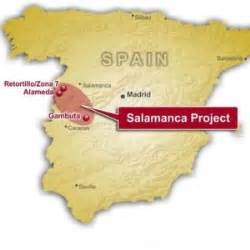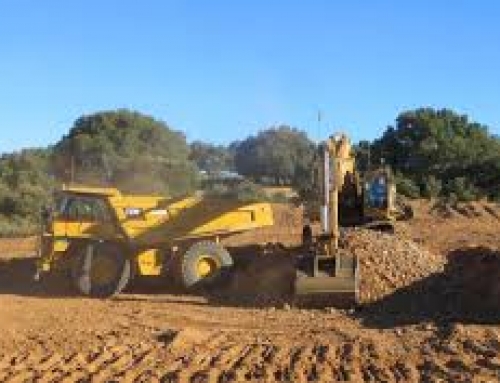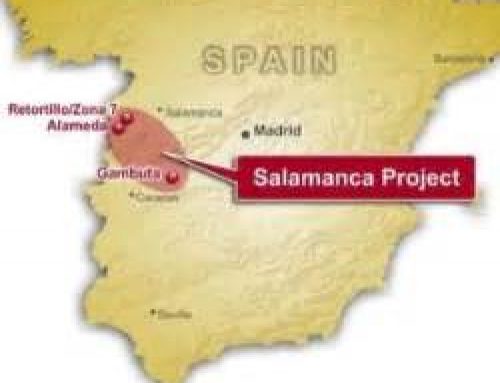The London quoted Berkeley Energia is a high impact, self-described clean- tech-energy company focused on bringing its wholly owned Salamanca mine into production. This world class uranium project is being developed in an historic mining area in western Spain, about three hours west of Madrid. Having tortuously gained all the Spanish and EU approvals for the development, the company enjoyed some bumper doses of good news in the last quarter of 2017, and it seemed to enter 2018 in fine fettle.
In one sense, its confidence appeared to grow further in 2018, to the extent that after prolonged negotiations, in June 2018 the group graduated from London’s junior AIM market to the LSE main board and also listed on the Spanish market. CEO Paul Atherley said this would allow Berkeley to build support among European institutional investors while advancing activities on-site towards production. Yet, between the late 2017 good news and the June flotations in June 2018, on 30 April 2018 the company issued the Quarterly Report for March 2018; and this turned out to be a rather defensive document.
A particular dollop of good news came towards the end of 2017 when a substantial investor, the Middle East Sultanate of Oman, clearly emerged as being very keen in becoming part of Berkeley. On 30 November 2017 Berkeley announced that it had finalised a deal with the Sultanate’s growth fund that would finance the flagship Salamanca mine through construction into production which ostensibly will start in 2018.
Back in the day (2016) Berkeley said the upfront costs of getting Salamanca into business would be US$96 million. Under the agreement with the Sultanate’s growth fund (SGRF) the company would receive US$120m through a convertible loan and option package to fully fund the project through to the output stage. Berkeley has already received an interest free and unsecured loan of US$65m convertible at 50p a share which was at a 12 per cent premium to the share price on the day of the deal (30 November).
The company also has the option on three further loan tranches amounting to US$55m convertible at 85p. The whole package, apart from de-risking the project also meant there is no dilution for existing shareholders since with full conversion the SRGF will hold over 28 per cent of Berkeley. The SGRF will also be able to participate in off-take deals.

Building the Salamanca plant in Spain
Salamanca, when a going concern, could become one of the 10 largest producers in the world, the company claims. A so-called definitive feasibility study (DFS) issued in 2016 said that Salamanca will be one of the lowest cost producers in the world and have robust financials. Although uranium spot prices were in the doldrums at the time the DFS was published, Berkeley was able to put lucrative off-take deals in place.
Berkeley signed a binding contract with trader Interalloys to supply two million pounds of uranium a year over five years at more than US$43 a pound almost twice the then current spot price of US$23 a pound. The DFS said that over an initial ten-year period, Salamanca could produce an average of 4.4m pounds a year at US$13.30 per pound and cash cost of US$15.06 a pound compared to a then spot price of US$25 a pound.
So why the defensive tone in the March 2018 report? You can only speculate at this stage. Maybe in part, it is due to the fact that, like fracking for shale gas, nuclear is not a wildly popular part of the energy mix for some investors. Berkeley is always at pains to stress that it is a clean tech company, and as a non-carbon emitting energy source it is helping the battle against climate change.
And according to the April report on the March quarter Berkeley believes there is growing demand for new nuclear plants. The report says: “The Chinese new build programme has new impetus and with a record 57 reactors under construction around the world there is a growing recognition among policymakers that the combination of renewables and nuclear energy is the pathway to clean energy future.”
Well, perhaps demand is growing. But another worry (and drag on the share price) seems to be the ongoing concern that despite production cuts by some of the world’s largest players in the field such as Cameco and Kazatomprom, the spot price for uranium stubbornly refuses to rise. In 2007 it was on a high of US$130 a pound, for the past few years it has struggled to get above US$25 a pound. The company says it is ‘cautiously optimistic’ that the supply/demand equation could go back into kilter soon.
Well, maybe the price will recover. But so what? According to some brokers the greatest drag on the shares has been the delays in getting to construction. The share price for the £106.97m market cap company was just above a 52-week low at 42.50p against a high of 58.50p. Perhaps “cautiously defensive” rather than “cautiously optimist” is a better catchphrase for the company just now.


